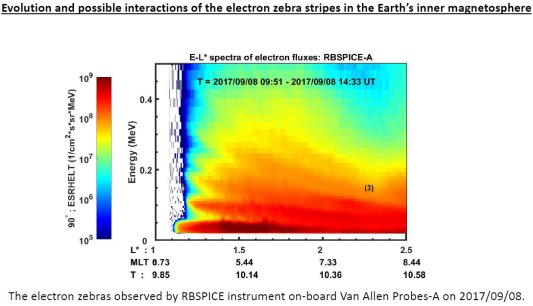関連ミッション
- ミッション3 宇宙生存環境
研究概要
Study of an unusual variation in the energetic electron fluxes present in the space is important from scientific and practical perspectives. A sudden increase in electron fluxes can lead to the malfunctioning of the electrical circuits on various spacecrafts. Enhanced fluxes may also cause an electrical discharge that may potentially lead to an overall failure of the satellite communication and economical losses. These energetic charged electrons gets trapped into the magnetic field geometry of the Earth and exhibits a wide range of characteristics.
Geomagnetically trapped electrons with 10–100’s keV energies are distributed smoothly across all the azimuths around the Earth. The azimuthal distribution of electrons play a major role in the study of electron diffusion across different shells, its trapping and loss in the outer space. During certain favourable magnetospheric conditions a sharp periodic rise and fall in the electron flux intensities are observed when represented in the energy versus L-value spectrogram. Such structures are observed during geomagnetically quiet and disturbed intervals and are are named as “zebra stripes”. Zebra stripe formation requires the presence of some global mechanism that can be observed across all the azimuthal directions below L=3. A variety of mechanisms based on observations and theory have been proposed for the formation of electron zebras. Some of those includes, radial diffusion, wave particle interactions, corotation of the Earth, substorm associated electric fields etc.
In this research, we aim to investigate the plausible mechanism that redistributes the smoothed electron fluxes to a peak like structures under the influence of some unknown factors. We make use of MHD simulation approach in addition to the observations from Van Allen Probes to propose a mechanism that acts as a primary contributor for the formation of electron zebras and its characteristic response. We invoke the calculations of electron drift angular frequency and its time period when zebras appear. These parameters play a major role to delineate the source region from where the electrons giving rise to peak and valley have been generated. The picture below shows the electron zebra observed by the Van Allen Probes spacecraft.
ページ先頭へもどる
2022年4月28日作成



